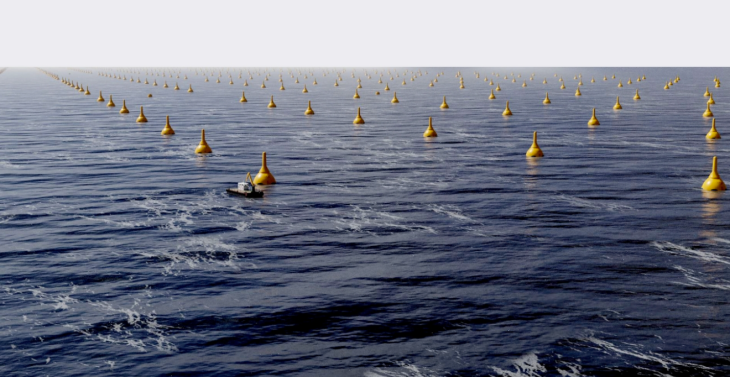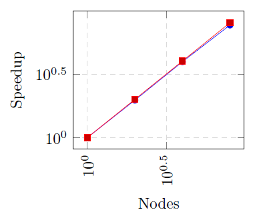
In this short notice, we briefly describe some afterward advances and challenges with respect to two work packages developed in the ENERXICO Project. This opened the possibility of collaborating with colleagues from institutions that did not participate in the project, for example from the University of Santander in Colombia and from the University of Vigo in Spain. This exemplifies the importance of the RISC2 project in the sense that strengthening collaboration and finding joint research areas and HPC applied ventures is of great benefit for both: our Latin American Countries and the EU. We are now initiating talks to target several Energy related topics with some of the RISC2 partners.
The ENERXICO Project focused on developing advanced simulation software solutions for oil & gas, wind energy and transportation powertrain industries. The institutions that collaborated in the project are for México: ININ (Institution responsible for México), Centro de Investigación y de Estudios Avanzados del IPN (Cinvestav), Universidad Nacional Autónoma de México (UNAM IINGEN, FCUNAM), Universidad Autónoma Metropolitana-Azcapotzalco, Instituto Mexicano del Petróleo, Instituto Politécnico Nacional (IPN) and Pemex, and for the European Union: Centro de Supercómputo de Barcelona (Institution responsible for the EU), Technische Universitäts München, Alemania (TUM), Universidad de Grenoble Alpes, Francia (UGA), CIEMAT, España, Repsol, Iberdrola, Bull, Francia e Universidad Politécnica de Valencia, España.
The Project contemplated four working packages (WP):
WP1 Exascale Enabling: This was a cross-cutting work package that focused on assessing performance bottlenecks and improving the efficiency of the HPC codes proposed in vertical WP (UE Coordinator: BULL, MEX Coordinator: CINVESTAV-COMPUTACIÓN);
WP2 Renewable energies: This WP deployed new applications required to design, optimize and forecast the production of wind farms (UE Coordinator: IBR, MEX Coordinator: ININ);
WP3 Oil and gas energies: This WP addressed the impact of HPC on the entire oil industry chain (UE Coordinator: REPSOL, MEX Coordinator: ININ);
WP4 Biofuels for transport: This WP displayed advanced numerical simulations of biofuels under conditions similar to those of an engine (UE Coordinator: UPV-CMT, MEX Coordinator: UNAM);
For WP1 the following codes were optimized for exascale computers: Alya, Bsit, DualSPHysics, ExaHyPE, Seossol, SEM46 and WRF.
As an example, we present some of the results for the DualPHYysics code. We evaluated two architectures: The first set of hardware used were identical nodes, each equipped with 2 ”Intel Xeon Gold 6248 Processors”, clocking at 2.5 GHz with about 192 GB of system memory. Each node contained 4 Nvidia V100 Tesla GPUs with 32 GB of main memory each. The second set of hardware used were identical nodes, each equipped with 2 ”AMD Milan 7763 Processors”, clocking at 2.45 GHz with about 512 GB of system memory. Each node contained 4 Nvidia V100 Ampere GPUs with 40 GB of main memory each. The code was compiled and linked with CUDA 10.2 and OpenMPI 4. The application was executed using one GPU per MPI rank.
In Figures 1 and 2 we show the scalability of the code for the strong and weak scaling tests that indicate that the scaling is very good. Motivated by these excellent results, we are in the process of performing in the LUMI supercomputer new SPH simulations with up to 26,834 million particles that will be run with up to 500 GPUs, which is 53.7 million particles per GPU. These simulations will be done initially for a Wave Energy Converter (WEC) Farm (see Figure 3), and later for turbulent models.

Figure 1. Strong scaling test with a fix number of particles but increasing number of GPUs.


Figure 2. Weak scaling test with increasing number of particles and GPUs.

Figure 3. Wave Energy Converter (WEC) Farm (taken from https://corpowerocean.com/)
As part of WP3, ENERXICO developed a first version of a computer code called Black Hole (or BH code) for the numerical simulation of oil reservoirs, based on the numerical technique known as Smoothed Particle Hydrodynamics or SPH. This new code is an extension of the DualSPHysics code (https://dual.sphysics.org/) and is the first SPH based code that has been developed for the numerical simulation of oil reservoirs and has important benefits versus commercial codes based on other numerical techniques.
The BH code is a large-scale massively parallel reservoir simulator capable of performing simulations with billions of “particles” or fluid elements that represent the system under study. It contains improved multi-physics modules that automatically combine the effects of interrelated physical and chemical phenomena to accurately simulate in-situ recovery processes. This has led to the development of a graphical user interface, considered as a multiple-platform application for code execution and visualization, and for carrying out simulations with data provided by industrial partners and performing comparisons with available commercial packages.
Furthermore, a considerable effort is presently being made to simplify the process of setting up the input for reservoir simulations from exploration data by means of a workflow fully integrated in our industrial partners’ software environment. A crucial part of the numerical simulations is the equation of state. We have developed an equation of state based on crude oil data (the so-called PVT) in two forms, the first as a subroutine that is integrated into the code, and the second as an interpolation subroutine of properties’ tables that are generated from the equation of state subroutine.
An oil reservoir is composed of a porous medium with a multiphase fluid made of oil, gas, rock and other solids. The aim of the code is to simulate fluid flow in a porous medium, as well as the behaviour of the system at different pressures and temperatures. The tool should allow the reduction of uncertainties in the predictions that are carried out. For example, it may answer questions about the benefits of injecting a solvent, which could be CO2, nitrogen, combustion gases, methane, etc. into a reservoir, and the times of eruption of the gases in the production wells. With these estimates, it can take the necessary measures to mitigate their presence, calculate the expense, the pressure to be injected, the injection volumes and most importantly, where and for how long. The same happens with more complex processes such as those where fluids, air or steam are injected, which interact with the rock, oil, water and gas present in the reservoir. The simulator should be capable of monitoring and preparing measurement plans.
In order to be able to perform a simulation of a reservoir oil field, an initial model needs to be created. Using geophysical forward and inverse numerical techniques, the ENERXICO project evaluated novel, high-performance simulation packages for challenging seismic exploration cases that are characterized by extreme geometric complexity. Now, we are undergoing an exploration of high-order methods based upon fully unstructured tetrahedral meshes and also tree-structured Cartesian meshes with adaptive mesh refinement (AMR) for better spatial resolution. Using this methodology, our packages (and some commercial packages) together with seismic and geophysical data of naturally fractured reservoir oil fields, are able to create the geometry (see Figure 4), and exhibit basic properties of the oil reservoir field we want to study. A number of numerical simulations are performed and from these oil fields exploitation scenarios are generated.

Figure 4. A detail of the initial model for a SPH simulation of a porous medium.
More information about the ENERXICO Project can be found in: https://enerxico-project.eu/
By: Jaime Klapp (ININ, México) and Isidoro Gitler (Cinvestav, México)
